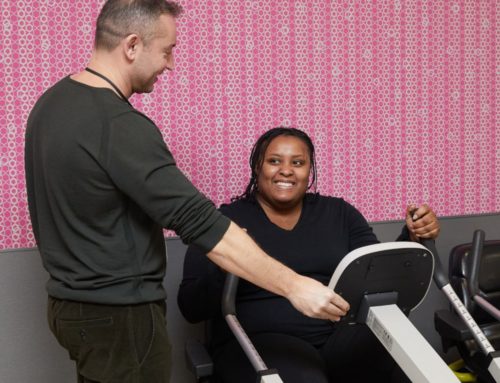Metabolic Syndrome In The Elderly
Metabolic syndrome is the term that medical practitioners use to describe a combination of obesity, high blood pressure, and diabetes. These three are grouped together under the term metabolic syndrome because they are all conditions which affect the body’s metabolic system. Together, they also increase the chances of a stroke and heart disease. This is due to the fact that all three conditions put strain on your body’s blood vessels.
Individually, each condition carries its own risk factors, and when the three combine in metabolic syndrome, it is even more threatening. This is particularly true when metabolic syndrome is present in an elderly person.
Here, we go over metabolic syndrome, including more information about the conditions that are related to it, its risk factors, and some ways to combat the condition.

Conditions related to metabolic syndrome
Metabolic syndrome is not a single condition, rather it is an umbrella term given to those who suffer from any three of the following five medical conditions:
- Abdominal obesity
- High blood pressure
- High blood sugar levels
- High serum triglycerides (fat levels in the blood)
- Low high-density lipoproteins (low levels of “good” cholesterol)
Risk factors for metabolic syndrome
Obesity
Metabolic syndrome is far more likely in obese or overweight individuals, particularly those who do not partake of any physical exercise.
Age
All people can develop metabolic syndrome, but the risk of developing the condition does increase with age.
Race
Some ethnic groups, such as those of Afro-Caribbean or Asian descent, are more likely than others to develop metabolic syndrome.
Pre-existing conditions
The following pre-existing conditions place you at a great risk factor:
- Cardiovascular disease
- NAFLD, non-alcoholic fatty liver disease
- PCOS, polycystic ovary syndrome (women only)
How to combat metabolic syndrome
The best way to combat metabolic syndrome is to not develop it in the first place. In the elderly – and in all persons, really – care should be taken that a healthful and balanced diet is combined with regular exercise to decrease the chances of developing any of the individual conditions. Or worsening them if those conditions are already present.
How can exercises help?
Regular physical exercise at a level suited to the person with metabolic syndrome can go some way towards preventing, and even reversing, the condition.
How can diet help?
A healthy and balanced diet controls your blood sugar levels, your cholesterol levels, and your blood pressure; all of which are contributing factors to metabolic syndrome.
Weight loss
In a person with metabolic syndrome, weight loss is important. Losing weight means that less pressure is put on the body to self-regulate fat levels, both internal and external.
Kick bad habits to the curb
Both smoking and alcohol consumption are contributing factors to metabolic syndrome.
Here at Fairview Adult Day Care in Brooklyn, we understand metabolic disease well. It is a relatively common condition which many of our clients have coped with. For the best chance of beating it, those of an advanced age should partake of regular exercise, eat a balanced diet, and make sure that all prescribed medications schedules, such as those to control high blood pressure or high cholesterol levels, are adhered to.
Metabolic syndrome may increase the sufferer’s chance of developing further dangerous conditions, but the good news is that the symptoms can be reversed.
This article is for educational and informational purpose only and does not substitute for professional medical advice. For any questions about your own health condition, speak to a qualified physician or healthcare provider.







Leave A Comment